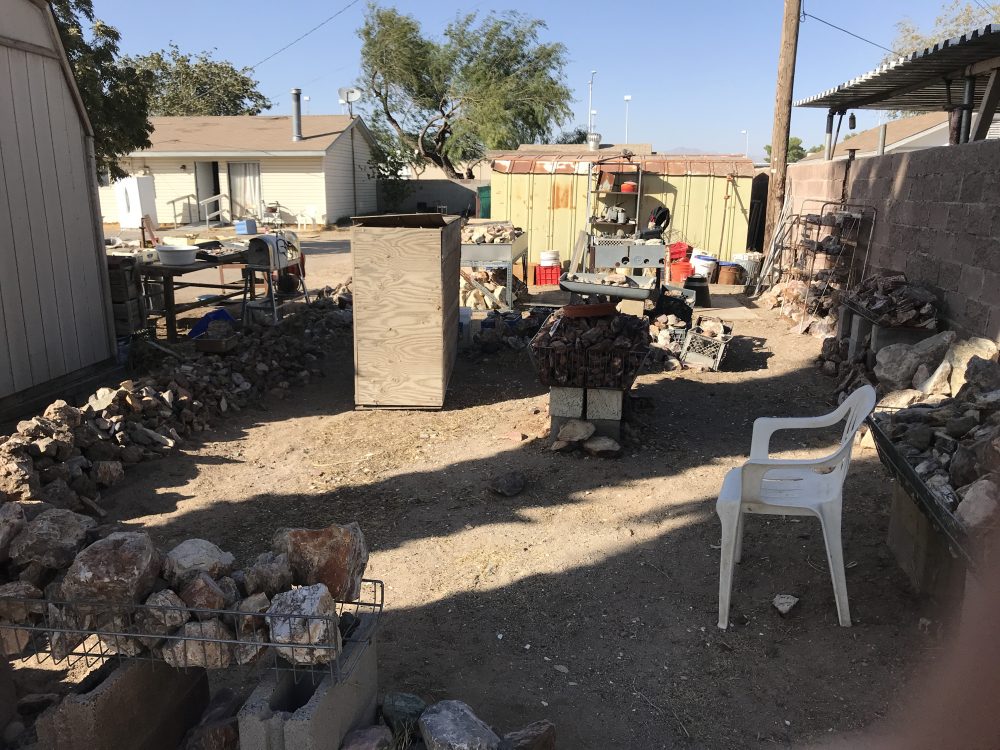Rupprecht Estate Rock
Care of Jason Fabbi G.G.
East Las Vegas, NV
702-544-1957
Appointment only.
Small rock yard representing more than sixty years of collecting in the Southwest by Ed Rupprecht and his wife. Mostly rocks that take a cut and polish, little in collectible minerals. Mostly rough, some slabs. Please bring cash in small bills. Rocks in general are two dollars a pound, slabs more, some things different. Ask Jason for particulars.
Bring your UV lamps, there is a barn like structure on this property with good darkness. I got plenty of pretty lime/green pieces in quartz like rocks, no red or unusual colors. It was not a calcite fest, either, which was good. And I only had a SW lamp, so your luck will be better if your portable lamp has all three wavelengths. Pet wood, opalized wood, a septarian nodule or two, rhyolite, and on and on. Well worth looking at if you are in Las Vegas.
Contact Fabbi to see if the yard is open. Jason is an extremely talented jeweler with a long history of collecting and finishing stones. He is very active in the local club, the SNGMS and does much custom work. He made a handsome bolo tie for me out of gold in quartz that I found.
Visible light

Handheld iPhone photo in SW just to give you an idea. 18 watt Way Too Cool lamp.

Picture of the rock yard.

One more picture.

And a video.
Estate rock yard of the late Ed Rupprecht in East Las Vegas from Thomas Farley on Vimeo.
A great man.


